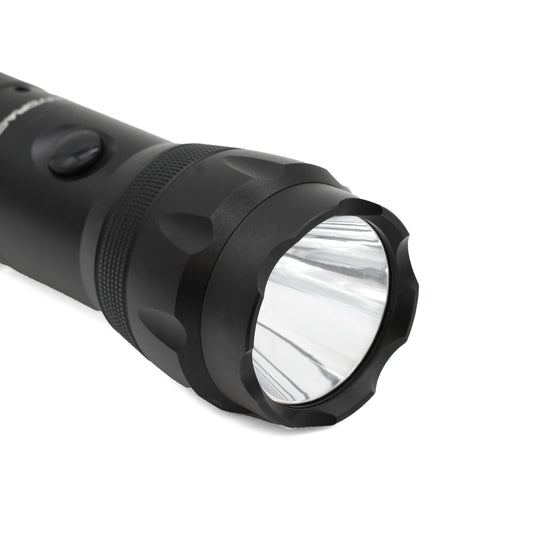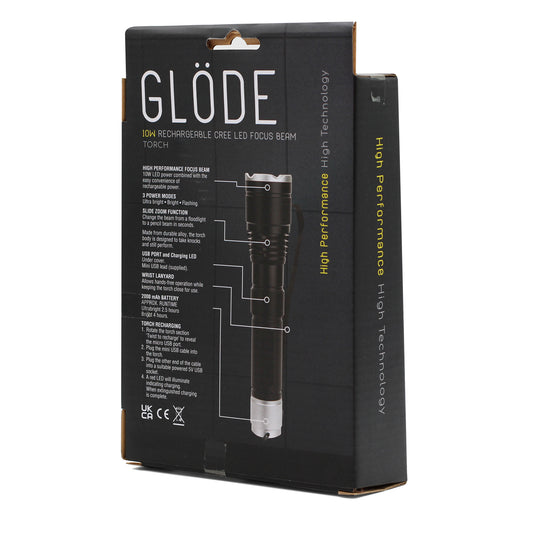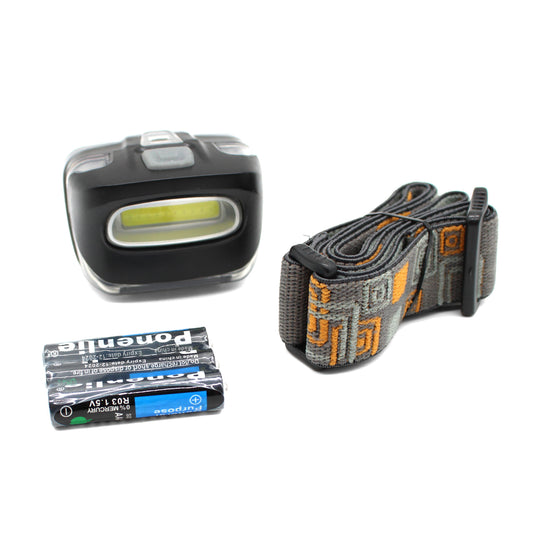RECEIVE 10% OFF YOUR FIRST ORDER WITH 'NewCustomer10' CODE AT CHECKOUT
BUY NOW, PAY LATER WITH KLARNA OR CLEARPAY ON ALL PRODUCTS
-
Lanterne HydraCell PL-450 alimentée par l'eau
Prix habituel £79.99Prix habituelPrix unitaire par£99.99Prix promotionnel £79.99En vente -
Lampe de poche en aluminium à cellule unique Hydracell - Alimentée par l'eau
Prix habituel £42.99Prix habituelPrix unitaire par£69.99Prix promotionnel £42.99En vente -
Lampe de poche à faisceau de mise au point Cree rechargeable Glode 10 W
Prix habituel £19.99Prix habituelPrix unitaire par£0.00Prix promotionnel £19.99 -
Lampe frontale Braai Light pour la cuisine en plein air
Prix habituel £9.99Prix habituelPrix unitaire par
Torches & Lanterns FAQ
What should I consider when choosing a camping torch or lantern?
When choosing a camping torch or lantern, consider factors like brightness (measured in lumens), battery life, weight, and durability. For torches, a compact and lightweight design is ideal for ease of use, while lanterns should offer a stable base and adjustable brightness settings. Consider whether you prefer rechargeable models or those that use replaceable batteries, and look for water-resistant or weatherproof features if you expect to be in wet conditions.
How many lumens do I need for camping?
The number of lumens you need depends on the activity. For general campsite use, a lantern with 100-300 lumens is sufficient to light up the area. For tasks like reading or cooking, a torch or headlamp with 150-250 lumens works well. If you need to navigate trails or search for items in the dark, a torch with 300 lumens or more provides strong illumination over a longer distance.
What are the benefits of using LED torches and lanterns?
LED torches and lanterns are highly energy-efficient, providing longer battery life compared to traditional incandescent bulbs. They are also more durable, with a longer lifespan and better resistance to shock and impact. LED lights typically offer brighter and more consistent illumination, and many models come with adjustable settings to suit different lighting needs. Additionally, LED lights generate less heat, making them safer to use in enclosed spaces like tents.
How do I choose between rechargeable and battery-powered camping lights?
Choosing between rechargeable and battery-powered camping lights depends on your needs and the duration of your trip. Rechargeable lights are more eco-friendly and cost-effective in the long run, as they don’t require disposable batteries. a Great choice for most camping trips. Battery-powered lights are convenient for longer trips where recharging might not be possible, and you can easily carry extra batteries for extended use.
What are the advantages of using water-powered lanterns?
Water-powered lanterns offer a sustainable and innovative way to provide light without traditional batteries or electricity. They are activated by adding water, making them an excellent option for emergency situations or extended trips where conventional power sources might not be available. They are reliable and can be a great backup light source for camping.
What are the benefits of using a headlamp over a handheld torch?
A headlamp offers hands-free lighting, making it ideal for tasks like setting up camp, cooking, or navigating trails in the dark. It allows you to direct light exactly where you’re looking, providing convenience and safety in low-light conditions. Headlamps are typically lightweight and offer adjustable brightness settings, making them versatile for various activities. They are a great addition to any camping gear setup, complementing a handheld torch or lantern.








